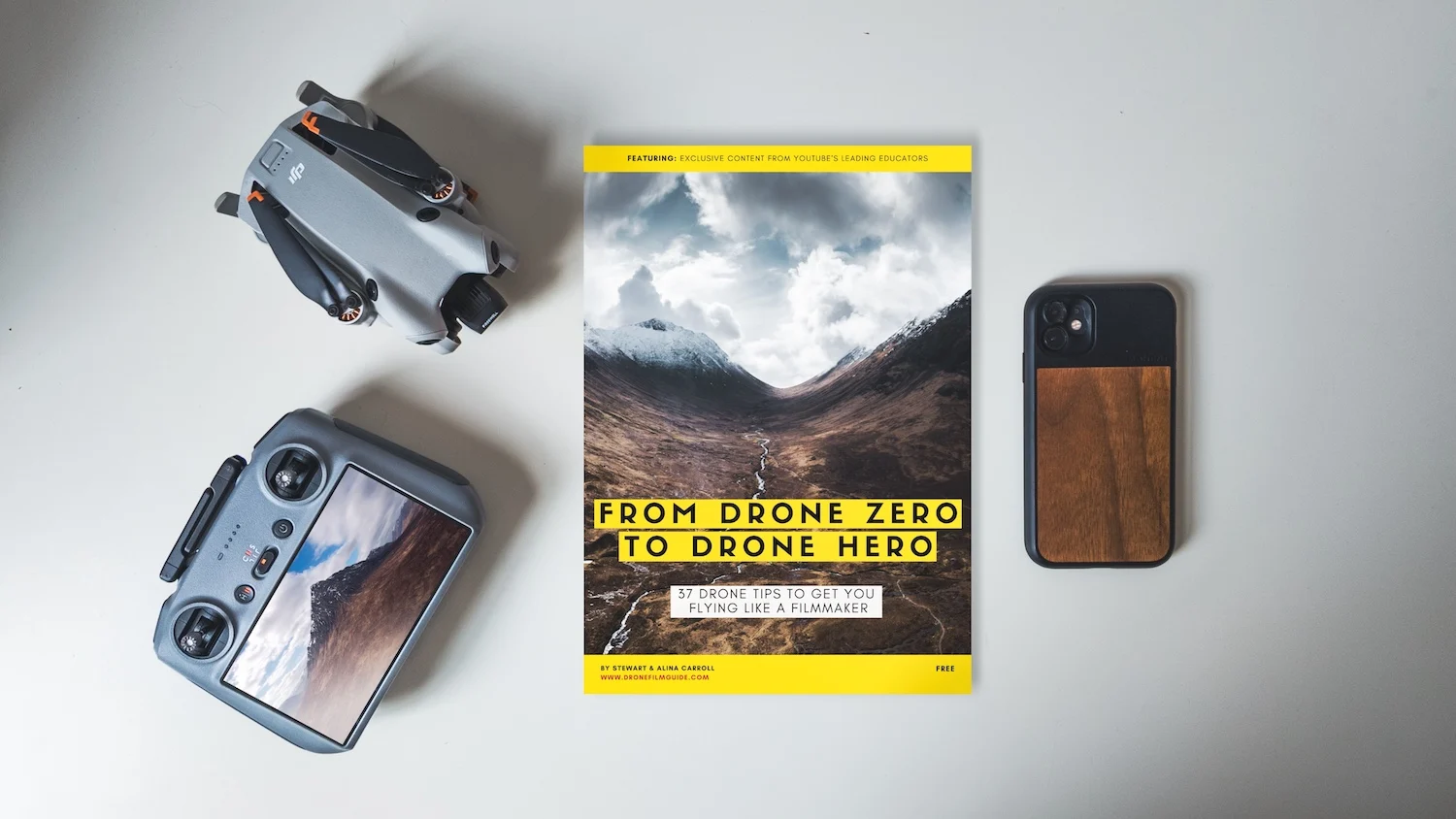DJI Mavic 4 Pro Review: A Beautiful Beast With Just One Wish
It will come as no surprise to anyone following DJI’s drone evolution that the Mavic 4 Pro is an absolute beauty. Sleek, powerful—and somehow—quiet despite its considerable size, it’s an impressive step forward in many ways. After spending some serious time with it in the field, I can confidently say: this is the most capable Mavic yet. But it’s not without a quirk or two—and I’ll get into the one thing I wish DJI had done differently a little later.
A Fresh Airframe and Smart Engineering
The Mavic 4 Pro arrives with a redesigned airframe and a gorgeous new controller. The RC Pro 2 features a flip-up screen and flip-out sticks, a 2000-nit display that rotates for vertical shooting, and a premium feel overall—though it’s not light. The drone itself clocks in at over a kilogram, and the whole setup is clearly aimed at creators prioritizing image quality over portability.
Specs to know:
- 51-minute theoretical flight time (up from 43 min on the Mavic 3 Pro)
- Top speed of 25 m/s (90 km/h)
- 10 m/s ascent and descent speeds
- Omnidirectional obstacle avoidance, now enhanced with LiDAR and 0.1-lux night sensing for low-light awareness
- Super quiet flight profile—truly impressive
- Internal storage (64GB or 512GB depending on the package)
- O4+ video transmission with up to 30km range (double that of the Mavic 3 Pro)
Startup is fast, satellite acquisition is near-instant, and obstacle avoidance is solid. Although, as I found out the hard way, no number of sensors replaces pilot awareness—yes, I still managed to crash into a hillside during ActiveTrack.
DOWNLOAD OUR FREE EBOOK!
From Drone Zero To Drone Hero – 37 Tips To Get You Flying Like A Filmmaker

Tracking That Actually Works
DJI’s ActiveTrack on the Mavic 4 Pro is no gimmick. Whether tracking me as a tiny spec on a hillside or following a fast-moving car, it held focus like a champ—even at speeds up to 18 m/s. Importantly, this reliable tracking is available across all three cameras on the drone.
Let’s Talk Cameras
This is where things get interesting.
The Mavic 4 Pro features a triple-camera setup:
- Main Camera – A 4/3″ Hasselblad sensor with variable aperture (f/2.0–f/11), capable of 6K video at 60fps and up to 100MP stills using quad-bayer tech. (Up from 20MP and 5.1K video on the Mavic 3 Pro.)
- Medium Telephoto (70mm) – A 1/1.3″ sensor, f/2.8, same as the one on the Air 3S. It shoots 4K at 120fps and delivers pleasing compression and parallax.
- Telephoto (168mm) – Upgraded to a 1/1.5″ sensor, also f/2.8, capable of 4K at 100fps. This is a big jump from the Mavic 3 Pro’s 12MP tele lens.
All three cameras support:
- 10-bit color
- D-Log, D-Log M, and HLG profiles
- RAW stills
- H.264/265 with All-Intra options for high-motion scenes
Image quality across the board is excellent. The new sensors also benefit from improved dynamic range, ISO flexibility, and low-light performance thanks to dual-native ISO on the main camera.
My One Wish: Zoom, Not a Trio
Switching between three completely different cameras—each with their own sensor size, aperture, and dynamic range—can be a bit fiddly, especially when shooting under pressure. Each lens feels like a tool with a specific use case, and that’s great in theory. But in practice, I often found myself wishing DJI had taken a different approach.
What if, instead of three separate cameras, we had one really solid zoom lens on that 4/3″ sensor? Something like a 28–70mm range with continuous optical zoom would offer far more flexibility without juggling settings mid-flight.
Yes, it’s a bit of a throwback to the old Mavic 2 Zoom (remember that?), but paired with today’s sensor tech, it could be magic.
That said, I get it. These three lenses deliver beautiful results and work great once you settle into their rhythm. It’s just… a Zoom Mavic 4 Pro? I’d be first in line.
Flight Experience
The Mavic 4 Pro is a joy to fly. It’s incredibly stable, responds like a dream, and yes—it’s still surprisingly quiet even at full speed. Ascent and descent speeds are quick and controlled, the downward sensors stay active in Sport Mode, and the drone’s agility makes it feel almost smaller than it is.
The gimbal’s full 70° upward tilt and 90° rotation enable true vertical video and low-angle creativity. You can shoot high-res vertical clips that are actually usable for platforms like Instagram and TikTok.
Mavic 4 Pro vs. Mavic 3 Pro: The Big Picture
There are several important differences that make the Mavic 4 Pro a clear upgrade:
- Camera resolution and performance have been dramatically improved across all lenses.
- Dynamic range and color profiles are more robust and flexible, offering filmmakers more in post.
- Flight time is longer and the airframe is more efficient.
- The new controller offers a brighter, rotatable screen and longer battery life (up to 4 hours).
- Transmission range has doubled to 30km.
- Low-light sensing and obstacle avoidance have been enhanced with LiDAR and IR tech.
For pros and content creators, these upgrades are meaningful. But it’s worth asking how often you’ll use all three lenses, and whether that added complexity fits your shooting style.
Final Thoughts
The Mavic 4 Pro isn’t a revolution—it’s a refinement. And that’s a good thing. DJI has taken an already excellent platform and given it sharper eyes, quieter motors, better control, and more tools for creators.
For professionals or serious hobbyists, this drone will give you years of faithful service. It’s powerful, polished, and packed with creative potential. Just don’t fly it into a hill.
And yes, I’m still dreaming of a 4/3 zoom. DJI, if you’re listening…

Leave a Reply